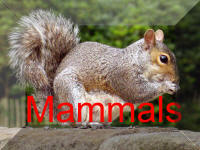Back To

Size
Wingspan to 10 " ( 25 cm) Head and Body 1 3/4 " ( 4.5cm)Av Weight 6-12 g
Description
The fur on the back has an even medium to dark brown colour. Belly fur is silvery or brownish grey. Fur is of an even length. When irritated, the bat holds its ears folded so that they are held almost at right angles to the head. Posterior edge of tragus is convex. Tragus is longer than it is broad. Calcar is three quarters of the length from foot to tail.
Life History
Mate from September through to April. Period of Gestation is usually 5-7 weeks but the precise timing is weather dependent In Europe one young is born in the month of June or July
Daubenton's bats in Europe only live 4-4.5 years . Maximum age recorded in Britain is 18 years but on averageHabitat
Daubenton's bats are found close to calm water in open wooded areas. The most common habitats found around Daubenton's bat roost sites in autumn were parkland, woodland and open-water Myotis bats inhabited a wide range of habitats, particularly rivers and lakes, but were never in villages.
Distribution
Foraging Behaviour
Forages 2-25cm above open water and occasionally along woodland paths but rarely within 2m of vegetation
Daubenton's bats were found to be most active near water bodies .Daubenton's bats foraging over water will concentrate on calm areas and avoid areas with ripples, a behaviour not explained by insect distribution. Ripples in the water surface are avoided as they may produce significant interference with the returning echo of the bat's call. Daubenton's bats avoid foraging over ponds covered with duckweed. This behaviour is unrelated to prey abundance. It is suggested these bats are less able to catch prey where there is duckweed cover. Known to forage up to 10km from roostDiet
The diet of Daubenton's bats mainly consists of aquatic Diptera . Aquatic pupae are taken from the water surface and male Chironomidae can be caught as they swarm above the water surface waiting for females to emerge. Daubenton's bats forage mainly by trawling insects from calm lake and river surfaces. Daubenton's bats in captivity can catch small fish with their feet if the fish penetrates a smooth water surface.
Roost Sites and Roosting Patterns
Emergence and Flight Pattern
Echolocation Calls
Status and Protection

